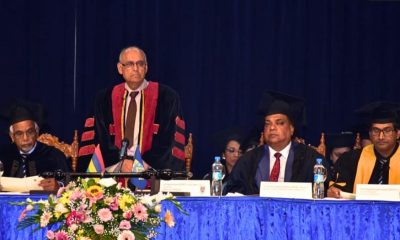News
Income Inequality: 50k In, 42k Out, Mauritius’ Middle Class Struggle

In a recent report, AXyS has highlighted the stark reality of income inequality in Mauritius, where one in ten employees earns more than Rs 50,000 per month, while the average monthly household expenditure is Rs 41,870.
The report has sparked concerns ahead of the upcoming legislative elections, with experts warning that the government’s handling of the issue could have significant implications for the country’s economic future.
The report noted that a significant proportion of employees earn more than Rs 75,000 per month, accounting for 18.4% of total salary income.
On the other hand, nearly 30% of the active population (124,153 out of 434,100) falls within the salary range of Rs 25,001 to Rs 50,000 per month.
The data also reveals that 45.6% of employees earned less than Rs 20,000 per month in 2023, before the introduction of the minimum wage in January.
The average salary has risen by 27.4% to Rs 29,800 since 2016, with the rising cost of living being a major factor.
The depreciation of the Mauritian rupee has had a significant impact on the economy, with the US dollar appreciating against the rupee by almost 46% since 2014.
This has led to a surge in prices, with food prices increasing by 88.9% between 2013 and 2024.
According to AXyS’ analysis, the purchasing power equivalence of Rs 5,000 in 2013 has eroded to Rs 7,176.
For instance, an average consumer who could buy goods worth Rs 5,000 in 2013 would now require Rs 7,176 to purchase the same quantity of goods.
The report also highlights the impact on different components of the Consumer Price Index (CPI), including:
- Food: +88.9%
- Alcoholic beverages and cigarettes: +85.1%
- Healthcare services: +65%
- Restaurants and hotels: +59.4%
- Household equipment: +48.2%
- Clothing and footwear: +44.9%
- Transportation: +39.3%
- Leisure activities: +32.9%
- Education: +27%
The only item that saw a decline was communication costs, which decreased by -6.7%.
The report also touched on the shortage of skilled labor exacerbated by migration and population aging, particularly affecting industries such as manufacturing and tourism.
AXyS’ research analyst Intesh Seebaluck emphasized that “the shortage of labor is a major challenge for our economy. We need to create incentives for our young talents to stay in Mauritius and contribute to economic development.”
The report also highlighted the growing pressure on government expenditures due to an aging population, with a significant portion of the budget allocated to social protection at the expense of essential sectors such as education, healthcare, and public security.
Sanjay Goolab, Managing Director – Securities and Execution Desk at AXyS, noted that “our report clearly shows how Mauritius’ economy has evolved and diversified over the decades, while highlighting current and future challenges.”
Major economic transformations since the 1980s have led to a diversified economy where no single sector exceeds 15% of total GDP. The financial sector has surpassed manufacturing as the main contributor to GDP since 2019.
The report concluded that while Mauritius has made significant progress in recent years, it still faces major challenges that require urgent attention from policymakers to ensure sustainable economic growth and development.
Source: Le Mauricien











